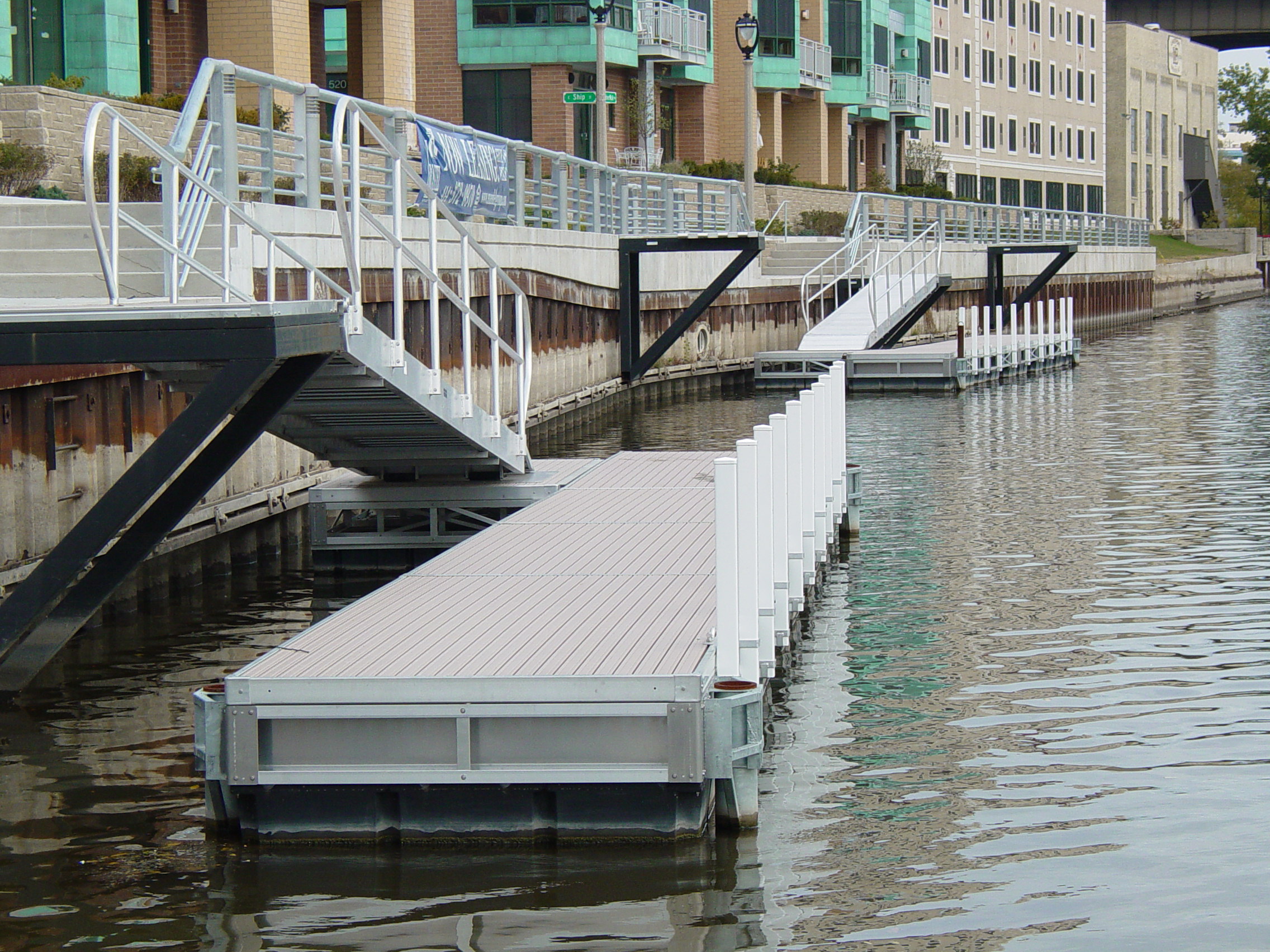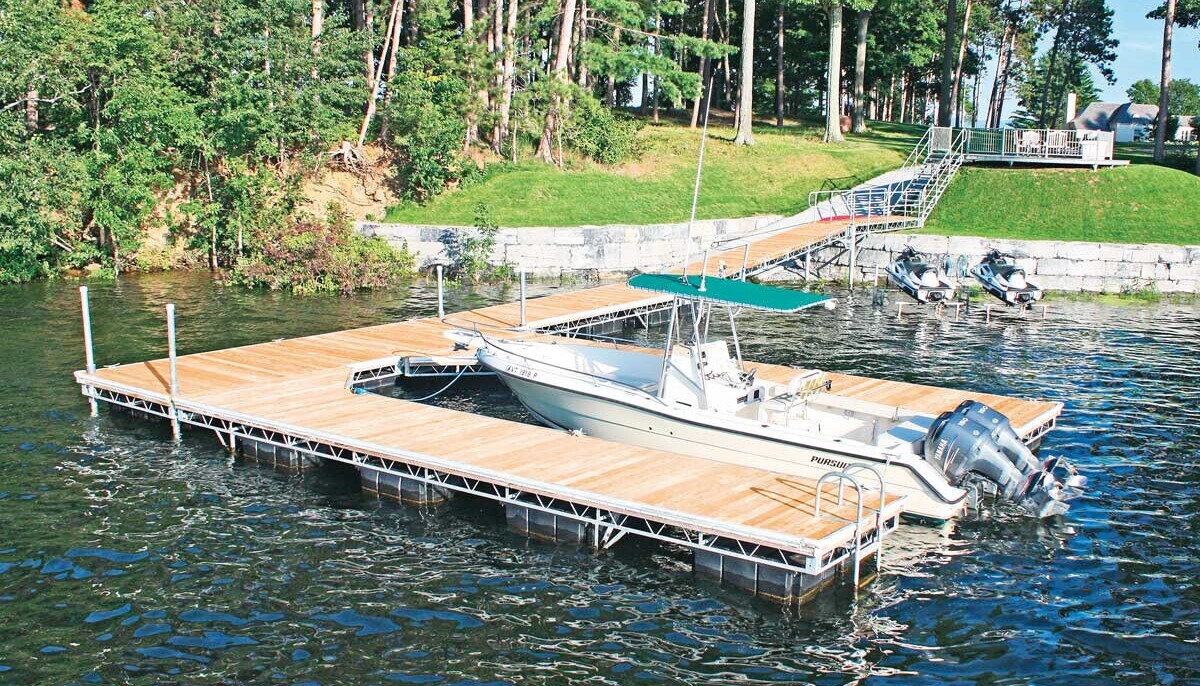Maximizing Your Outdoor Room with Specialized Floating Dock Solutions
Maximizing Your Outdoor Room with Specialized Floating Dock Solutions
Blog Article
Produce the Perfect Docking Service With Floating Docks
Floating docks existing a functional remedy for a variety of maritime requirements, adapting flawlessly to varying water degrees and diverse vessel types. Their modular nature enables fast setup and relocation, yet the selection of appropriate materials and style attributes is vital for ensuring both functionality and aesthetic charm. As we discover the important aspects that add to the efficiency of floating docks, numerous key elements regarding security and upkeep will emerge, questioning regarding just how to optimize your docking experience. The subsequent discussion will light up these important factors to consider.

Advantages of Floating Docks
Floating docks deal numerous benefits that make them an ideal choice for various maritime applications. One of the primary benefits is their flexibility to changing water levels. Unlike taken care of docks, floating docks fluctuate with the tide, guaranteeing regular access for vessels. This feature is particularly vital in locations vulnerable to substantial tidal variations or seasonal water degree modifications.
In addition, floating docks are typically much easier and quicker to install compared to typical fixed structures. Their modular style permits simple setting up and disassembly, assisting in upkeep and moving when needed. This versatility is particularly beneficial for temporary applications or in settings where problems may transform.
Floating docks also tend to be a lot more eco-friendly, as they decrease disturbance to the seabed and bordering marine ecological communities. Their resilient nature reduces the risk of damage to aquatic life, promoting a healthier atmosphere. Additionally, these docks can be tailored to suit various vessel sizes, making sure that they meet certain operational demands - floating dock builder.
Inevitably, the combination of adaptability, simplicity of setup, and ecological considerations makes floating docks a very reliable solution for a large range of maritime needs.
Picking the Right Materials
Picking the appropriate products for floating docks is important to ensure toughness, security, and durability. The option of materials directly affects the dock's performance in different environmental conditions, including exposure to water, sunlight, and potential wear from marine traffic.
Typical products used for floating docks consist of aluminum, wood, and high-density polyethylene (HDPE) Light weight aluminum is lightweight, corrosion-resistant, and needs minimal upkeep, making it an exceptional option for longevity. Its initial price can be higher compared to other products.
Timber, while cosmetically enticing and providing a conventional appearance, can be vulnerable to rot and insect damage if not correctly treated. Consequently, making use of pressure-treated timber or naturally resilient species like cedar or redwood can reduce these problems.
HDPE is a popular choice due to its resistance to UV rays and chemicals, in addition to being eco-friendly. dock company. It is available and light-weight in various colors, enabling customization
Ultimately, the best product choice will depend on certain demands, consisting of budget, preferred looks, and environmental considerations. Mindful evaluation of these aspects will certainly lead to a durable and effective floating dock option.
Style Factors To Consider for Security
When creating floating docks, guaranteeing stability is a basic facet that can considerably impact their functionality and safety and security. Stability in floating dock layout is influenced by various variables, including buoyancy, weight circulation, and the plan of components.
Weight circulation is important; uniformly distributing tons throughout the dock protects against turning and improves security. This can be attained via strategic placement of docking devices, such as fenders and cleats, along with correct spacing of floats. Furthermore, the measurements of the dock ought to be thoughtfully planned. Broader styles can supply boosted security, specifically in rough water problems, while longer docks might need added supports to stop drooping.
Another crucial factor to consider is the ecological influence, including wave activity and wind. Incorporating functions such as sidewalls or skirting can assist mitigate the results of environmental forces, preserving stability in unfavorable problems. Inevitably, a mix of thoughtful style, product selection, and understanding of environmental aspects will produce a drifting dock that fulfills both stability and security requirements.
Installation Tips and Strategies

Following, safeguard the necessary permits and comply with neighborhood laws, which may determine setup approaches and ecological considerations. Involve a qualified service provider experienced in floating dock installments if needed. Use high-quality materials developed for marine settings to improve durability and longevity.
When positioning the dock, straighten it alongside the coastline to assist in very easy access. Make sure that the anchoring system is robust, employing concrete blocks or helical anchors to maintain the dock versus wind and wave action. It's critical to account for seasonal water degree fluctuations, consisting of prospective ice activity in cooler climates.
During the setup, confirm the dock's floatation and security prior to completing the anchoring. Regularly inspect the installation for any type of signs of wear or damage. By complying with these suggestions and strategies, you can attain a safe, functional, and cosmetically pleasing floating dock installment that fulfills your demands.
Maintenance and Care Standards
Keeping and caring for floating docks is critical to lengthening their life-span and making sure safe use. Routine assessments should be performed to recognize any type of indicators of wear, damage, or aquatic development. Try to find splits, loose installations, or discolored areas on the dock's surface, as these issues can endanger structural stability.
Cleaning is necessary. Make use of a pressure washer to eliminate algae, barnacles, and particles, which can collect with time. For stubborn development, take into consideration eco-friendly cleaner that will not harm aquatic life.
Furthermore, inspect the mooring lines and anchors often to guarantee they are secure and complimentary from rust. Replace any type of torn or harmed lines immediately to keep stability.
Throughout see here extreme weather, such as storms or freezing problems, take preventive procedures. Secure the dock with extra mooring lines and, if feasible, eliminate any kind of removable parts read this article to stop damages.
Verdict
Finally, the execution of floating docks presents a flexible and reliable docking option suitable for numerous maritime applications. Their flexibility to rising and fall water degrees, combined with a modular design, enables very easy modification and relocation. Choosing appropriate materials boosts both toughness and visual appeal, while cautious consideration of stability ensures safety and security and durability. With proper installment and regular upkeep, floating docks can supply dependable and reliable docking experiences for a large range of vessels.
As we explore the vital components that contribute to the performance of floating docks, a number of vital variables relating to security and maintenance will arise, increasing questions regarding just how to optimize your docking experience. Unlike dealt with docks, floating docks surge and fall with the trend, making sure constant accessibility for vessels.When designing floating docks, ensuring security is a basic aspect that can considerably impact their capability and website link security. Stability in floating dock design is affected by different factors, including buoyancy, weight circulation, and the setup of parts. Inevitably, a mix of thoughtful layout, product option, and understanding of environmental factors will certainly yield a floating dock that fulfills both stability and safety needs.
Report this page